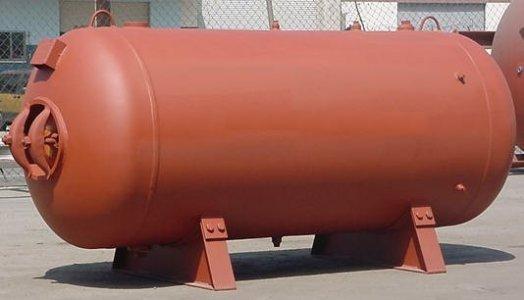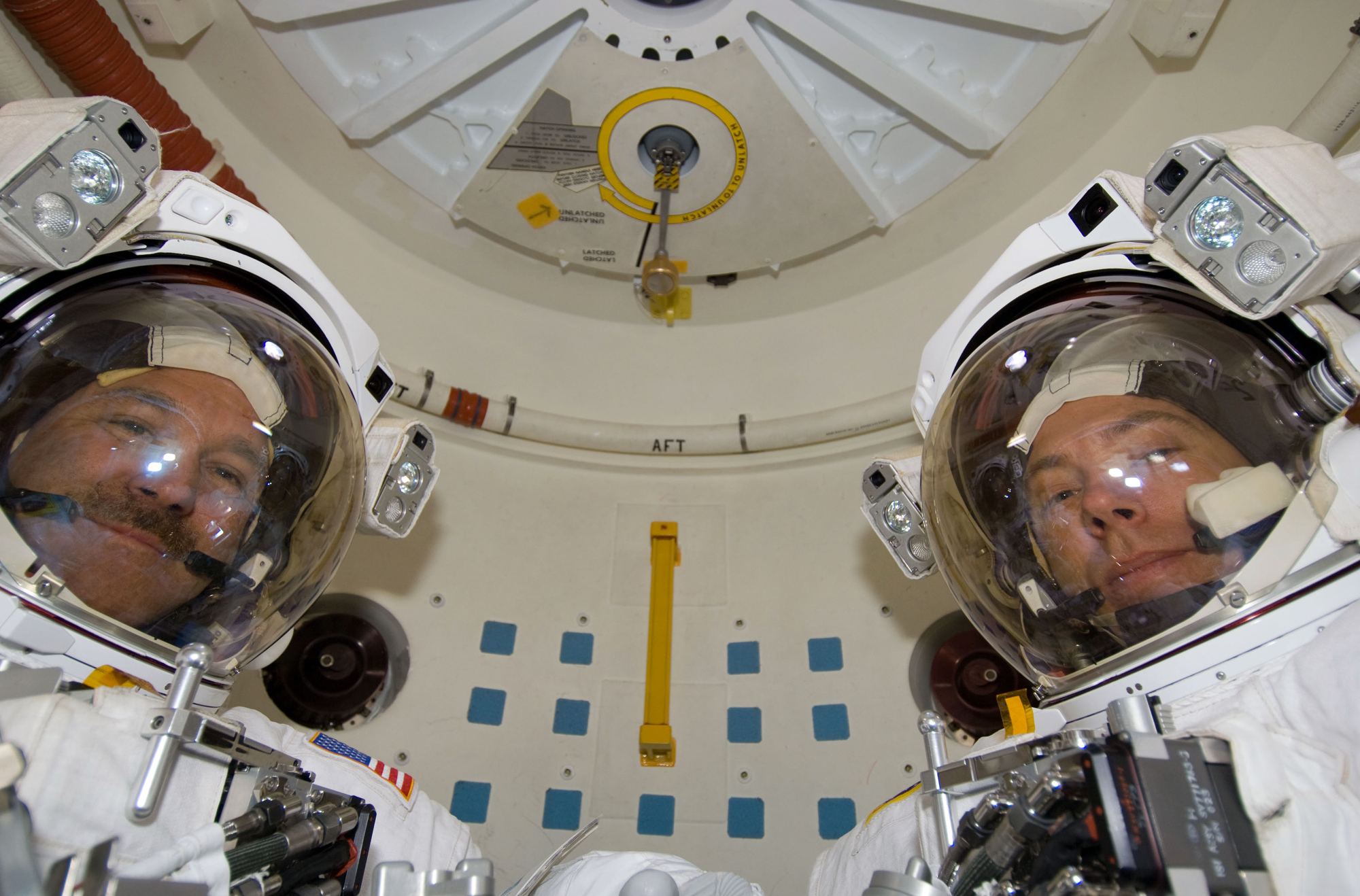|
Hyperbaric Oxygen Chamber
A diving chamber is a vessel for human occupation, which may have an entrance that can be sealed to hold an internal pressure significantly higher than ambient pressure, a pressurised gas system to control the internal pressure, and a supply of breathing gas for the occupants. There are two main functions for diving chambers: * as a simple form of submersible vessel to transport divers underwater and to provide a temporary base and retrieval system in the depths; * as a land, ship or offshore platform-based hyperbaric chamber or system, to artificially reproduce the hyperbaric conditions under the sea. Internal pressures above normal atmospheric pressure are provided for diving-related applications such as saturation diving and diver decompression, and non-diving medical applications such as hyperbaric medicine. Also known as a Pressure vessel for human occupancy, or PVHO. The engineering safety design code is ASME PVHO-1. Basic types of diving chambers There are two basi ... [...More Info...] [...Related Items...] OR: [Wikipedia] [Google] [Baidu] |
Neutral Buoyancy Lab
The Neutral Buoyancy Laboratory (NBL) is an astronaut training facility and neutral buoyancy pool operated by NASA and located at the Sonny Carter Training Facility, near the Johnson Space Center in Houston, Texas. The NBL's main feature is a large indoor pool of water, in which astronauts may perform simulated Extra-vehicular activity, EVA tasks in preparation for upcoming missions. Trainees wear suits designed to provide neutral buoyancy to simulate the microgravity that astronauts experience during spaceflight. History In the late 1980s NASA began to consider replacing its previous neutral-buoyancy training facility, the Neutral buoyancy pool#Weightless Environment Training Facility (WETF), Weightless Environment Training Facility (WETF). The WETF, located at Johnson Space Center, had been successfully used to train astronauts for numerous missions, but its pool was too small to hold useful mock-ups of space station components of the sorts intended for the mooted Space Station ... [...More Info...] [...Related Items...] OR: [Wikipedia] [Google] [Baidu] |
Pressure Vessel
A pressure vessel is a container designed to hold gases or liquids at a pressure substantially different from the ambient pressure. Construction methods and materials may be chosen to suit the pressure application, and will depend on the size of the vessel, the contents, working pressure, mass constraints, and the number of items required. Pressure vessels can be dangerous, and fatal accidents have occurred in the history of their development and operation. Consequently, pressure vessel design, manufacture, and operation are regulated by engineering authorities backed by legislation. For these reasons, the definition of a pressure vessel varies from country to country. The design involves parameters such as maximum safe operating pressure and temperature, safety factor, corrosion allowance and minimum design temperature (for brittle fracture). Construction is tested using nondestructive testing, such as ultrasonic testing, radiography, and pressure tests. Hydrostatic pressure t ... [...More Info...] [...Related Items...] OR: [Wikipedia] [Google] [Baidu] |
Submersibles
A submersible is an underwater vehicle which needs to be transported and supported by a larger ship, watercraft or dock, platform. This distinguishes submersibles from submarines, which are self-supporting and capable of prolonged independent operation at sea. There are many types of submersibles, including both human-occupied vehicles (HOVs) and uncrewed craft, variously known as remotely operated vehicles (ROVs) or unmanned underwater vehicles (UUVs). Submersibles have many uses including oceanography, underwater archaeology, ocean exploration, tourism, underwater work, equipment maintenance and underwater search and recovery, recovery and underwater videography. History The first recorded self-propelled underwater vessel was a small oar-powered submarine conceived by William Bourne (mathematician), William Bourne (c. 1535 – 1582) and designed and built by Dutch inventor Cornelis Drebbel in 1620, with two more improved versions built in the following four years.Konstam (201 ... [...More Info...] [...Related Items...] OR: [Wikipedia] [Google] [Baidu] |
Underwater Habitat
Underwater habitats are underwater structures in which people can live for extended periods and carry out most of the Circadian rhythm, basic human functions of a 24-hour day, such as working, resting, eating, attending to personal hygiene, and sleeping. In this context, 'habitat' is generally used in a narrow sense to mean the interior and immediate exterior of the structure and its fixtures, but not its surrounding ocean, marine environment. Most early underwater habitats lacked regenerative systems for air, water, food, electricity, and other resources. However, some underwater habitats allow for these resources to be delivered using pipes, or generated within the habitat, rather than manually delivered. An underwater habitat has to meet the needs of human physiology and provide suitable Natural environment, environmental conditions, and the one which is most critical is breathing gas of suitable quality. Others concern the physical environment (pressure, temperature, light, h ... [...More Info...] [...Related Items...] OR: [Wikipedia] [Google] [Baidu] |
Buoyancy
Buoyancy (), or upthrust, is the force exerted by a fluid opposing the weight of a partially or fully immersed object (which may be also be a parcel of fluid). In a column of fluid, pressure increases with depth as a result of the weight of the overlying fluid. Thus, the pressure at the bottom of a column of fluid is greater than at the top of the column. Similarly, the pressure at the bottom of an object submerged in a fluid is greater than at the top of the object. The pressure difference results in a net upward force on the object. The magnitude of the force is proportional to the pressure difference, and (as explained by Archimedes' principle) is equivalent to the weight of the fluid that would otherwise occupy the submerged volume of the object, i.e. the Displacement (fluid), displaced fluid. For this reason, an object with average density greater than the surrounding fluid tends to sink because its weight is greater than the weight of the fluid it displaces. If the objec ... [...More Info...] [...Related Items...] OR: [Wikipedia] [Google] [Baidu] |
Umbilical Cable
An umbilical cable or umbilical is a cable and/or hose that supplies required consumables to an apparatus, like a rocket, or to a person, such as a diver or astronaut. It is named by analogy with an umbilical cord. An umbilical can, for example, supply air and power to a pressure suit or hydraulic power, electrical power and fiber optics to subsea equipment and divers. Spaceflight applications Rockets Umbilicals connect a missile or space vehicle to ground support equipment on the launch pad before launch. Cables carry electrical power, communications, and telemetry, and pipes or hoses carry liquid propellants, cryogenic fluids, and pressurizing and purge gases. These are automatically disconnected shortly before or at launch. Umbilical connections are also used between rocket stages, and between the rocket and its spacecraft payload; these umbilicals are disconnected as stages are disconnected and discarded. Space suits Early space suits used in Project Gemini in 19 ... [...More Info...] [...Related Items...] OR: [Wikipedia] [Google] [Baidu] |
Wire Rope
Steel wire rope (right hand lang lay) Wire rope is composed of as few as two solid, metal wires twisted into a helix that forms a composite ''rope'', in a pattern known as ''laid rope''. Larger diameter wire rope consists of multiple strands of such laid rope in a pattern known as ''cable laid''. Manufactured using an industrial machine known as a strander, the wires are fed through a series of barrels and spun into their final composite orientation. In stricter senses, the term ''wire rope'' refers to a diameter larger than , with smaller gauges designated cable or cords. Initially wrought iron wires were used, but today steel is the main material used for wire ropes. Historically, wire rope evolved from wrought iron chains, which had a record of mechanical failure. While flaws in chain links or solid steel bars can lead to catastrophic failure A catastrophic failure is a sudden and total failure from which recovery is impossible. Catastrophic failures often lead to cascadi ... [...More Info...] [...Related Items...] OR: [Wikipedia] [Google] [Baidu] |
Diving Support Vessel
A diving support vessel is a ship that is used as a floating base for professional diving projects. Basic requirements are the ability to keep station accurately and reliably throughout a diving operation, often in close proximity to drilling or production platforms, for positioning to degrade slowly enough in deteriorating conditions to recover divers without excessive risk, and to carry the necessary support equipment for the mode of diving to be used. Recent offshore diving support vessels tend to be dynamically positioned (DP) and double as remotely operated underwater vehicle (ROV) support vessels, and also be capable of supporting seismic survey operations and cable-laying operations. DP makes a wider range of operations possible, but the platform presents some inherent hazards, particularly the marine thruster, thrusters, making launch and recovery by diving bell widespread. They may use a moonpool to shelter the position where the bell or ROV enters and exits the water, an ... [...More Info...] [...Related Items...] OR: [Wikipedia] [Google] [Baidu] |
Underwater Habitat
Underwater habitats are underwater structures in which people can live for extended periods and carry out most of the Circadian rhythm, basic human functions of a 24-hour day, such as working, resting, eating, attending to personal hygiene, and sleeping. In this context, 'habitat' is generally used in a narrow sense to mean the interior and immediate exterior of the structure and its fixtures, but not its surrounding ocean, marine environment. Most early underwater habitats lacked regenerative systems for air, water, food, electricity, and other resources. However, some underwater habitats allow for these resources to be delivered using pipes, or generated within the habitat, rather than manually delivered. An underwater habitat has to meet the needs of human physiology and provide suitable Natural environment, environmental conditions, and the one which is most critical is breathing gas of suitable quality. Others concern the physical environment (pressure, temperature, light, h ... [...More Info...] [...Related Items...] OR: [Wikipedia] [Google] [Baidu] |
Submarine
A submarine (often shortened to sub) is a watercraft capable of independent operation underwater. (It differs from a submersible, which has more limited underwater capability.) The term "submarine" is also sometimes used historically or informally to refer to remotely operated vehicles and Autonomous underwater vehicle, robots, or to medium-sized or smaller vessels (such as the midget submarine and the wet sub). Submarines are referred to as ''boats'' rather than ''ships'' regardless of their size. Although experimental submarines had been built earlier, submarine design took off during the 19th century, and submarines were adopted by several navies. They were first used widely during World War I (1914–1918), and are now used in many navy, navies, large and small. Their military uses include: attacking enemy surface ships (merchant and military) or other submarines; aircraft carrier protection; Blockade runner, blockade running; Ballistic missile submarine, nuclear deterrenc ... [...More Info...] [...Related Items...] OR: [Wikipedia] [Google] [Baidu] |
Airlock
An airlock is a room or compartment which permits passage between environments of differing atmospheric pressure or composition, while minimizing the changing of pressure or composition between the differing environments. An airlock consists of a chamber with two Hermetic seal, airtight doors or openings, usually arranged in series, which do not open simultaneously. Airlocks can be small-scale mechanisms, such as Fermentation lock, those used in fermenting, or larger mechanisms, which often take the form of an antechamber. An airlock may also be used underwater to allow passage between the air environment in a pressure vessel, such as a submarine, and the water environment outside. In such cases the airlock can contain either Atmosphere of Earth, air or water. This is called a floodable airlock or underwater airlock, and is used to prevent water from entering a submersible vessel or underwater habitat. Operation The procedure of entering an airlock from the external or am ... [...More Info...] [...Related Items...] OR: [Wikipedia] [Google] [Baidu] |






